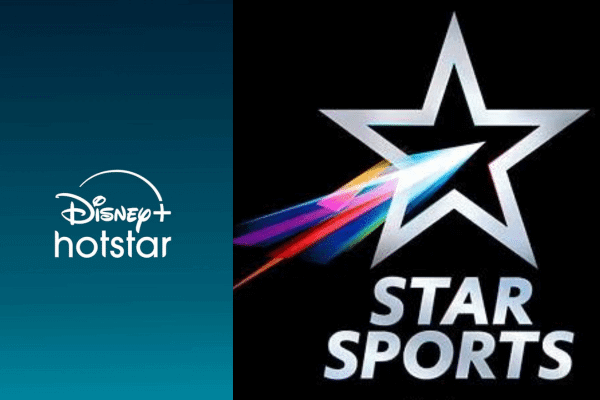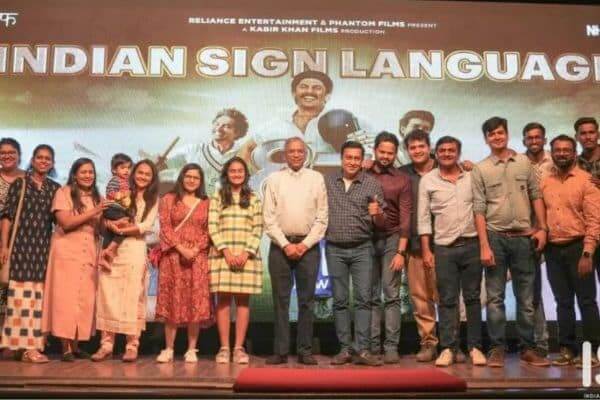How did India’s deaf community perceive the feeling of joy after a great move by their favourite cricket player during the T20 World Cup? As a means to make cricket matches more accessible, a partnership was established between India Signing Hands and broadcasters before the IPL 2024 so that Hindi commentary feeds on Star Sports 3 and Disney+ Hotstar could include sign language interpretation.
So during that focal moment of the game when Jasprit Bumrah castled Muhammad Rizwan on the first ball of the 15th over in the India-Pakistan clash of the 2024 T20 World Cup, everyone across households in India felt a sense of jubilation, as positioned at the bottom right-hand corner of television and digital screens in India, a female sign language interpreter swiftly communicated the happiness around the dismissal in the game through her animated expressions and precise hand gestures.

According to estimates provided by the World Health Organisation (WHO) in 2023, India is home to a deaf community of approximately 63 million individuals. Hence, it makes sign language interpretation crucial for effective communication and comprehension between deaf individuals and those with normal hearing.
Mansi, a certified interpreter, naturally communicates through sign language due to being raised by deaf parents. She states how sign language interpretation is providing a feeling of belonging to deaf cricket viewers in India. “To have something like sign language at T20 is actually very monumental because this is being done for the first time in the world and in India, we know how big cricket is. Plus, deaf people have always loved cricket, and just like any other fans, they are crazy about it.”

Mansi remembers how deaf people previously had a limited viewing experience of cricket matches. “They could only see the score, wickets, and whatever graphics would be on the screen. But now with Indian sign language interpretation, they can learn so many facts shared by the commentators, like there are so many jokes that are cracked during the match…Now they’re actually able to feel that vibe – like when you hear the commentary, you feel a certain way, right?”
To prepare for the Men’s T20 World Cup, Mansi and other sign language interpreters like Priya Sundaram, Shivoy Sharma, Kinjal Shah, and Namra Shah, teamed up with sign language experts to devise signs for cricket-related terminology and establish signage representations for certain cricketers.
To increase precision, several deaf cricketers joined the team and provided valuable feedback on sign language interpretation for the tournament. Interpreters use hand gestures to show the direction of a shot, the trajectory of a delivery, and extras conceded.
If a ball or shot is an absolute peach in a dire situation, it is conveyed via the perfect sign, where the thumb and index finger are in a circle, with the other fingers straight or relaxed away from the palm. “Just like Hindi, Marathi or English, every language has its own grammar, which encapsulates the emotions. So, when you want to express yourself, you use grammar, and words in the language to express yourself.”
“Similarly, in sign language, if you want to express your emotions or you want to express something, you do it through the grammar, which is a facial expression, or via body movement, and the shapes of your hands. All of this is the sign language grammar through which the interpreter can express themselves.”
“In a game, it is a very exciting moment where the catch is taken, and you can see that expression on the interpreter’s face as well. So that is how deaf people are able to connect with what is being said because facial expressions hold huge importance for deaf listeners.”

“Hearing people can hear and listen, but deaf people cannot hear. So they consume through their visual sense, which is their eyesight. For them, it’s all about their eyes, which is why sign language is called a visual language,” elaborates Mansi. “Earlier, what would happen is they would sit with their families to watch, but they would ask, ‘Oh, what happened? Can you tell me what did he say?’ Then their relative would explain, but it would be very brief and it made them feel neglected…Now they can independently watch it; they don’t need to depend on anyone. So that independence is kind of empowering a community to learn and dream.”
Mansi states that she is glad that this has opened the floodgates to increased sign language interpretation within entertainment. She states that “just like hearing people are sitting and consuming content, the same can be done in sign language. So again, the whole world’s an oyster when it comes to that now,” she said, further reiterating the importance of sign language interpretation in ensuring greater inclusivity.
READ MORE: A Tinnitus Update on World Hearing Day





